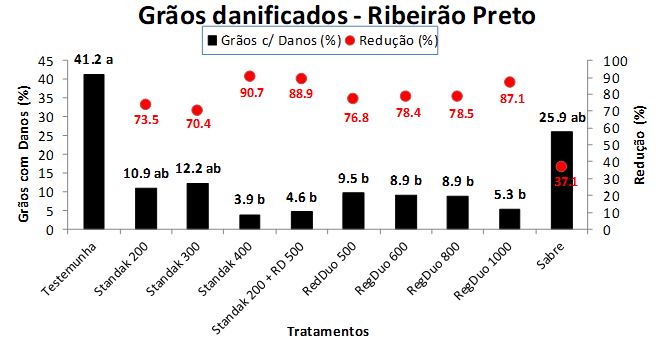Evaluation of seed treatments and at-plant soil insecticides for the control of burrower bug, Cyrtomenus mirabilis (Hemiptera: Cydnidae) in peanut
DOI:
https://doi.org/10.17648/sas.v1i2.57Keywords:
Arachis hypogeae L., Soil pest, Pesticide residueAbstract
Recently, a significant increase in the occurrence of the burrower bug, Cyrtomenus mirabilis (Hemiptera: Cydnidae), has been observed in peanuts. Due to the underground habit, its control is extremely difficult. So far, there are no insecticides recommended for its control. Thus, the objective of the work was to evaluate the efficiency of insecticides in the control of nymphs and adults of the burrower bug and to analyze the residue of the insecticides in the peanut kernels. For this, two experiments were installed at Apta Centro Norte in Pindorama, SP, and at Sugarcane Research Center / IAC in Ribeirão Preto, SP. Those experiments were in randomized blocks with ten treatments, and four replications. At the end of the peanut cycle, the number of insects per trench was counted and the damage caused by them in the different treatments was evaluated. In Pindorama, in order to the low occurrence no statistic analysis was done in terms of insect number. On the other hand, in Ribeirão Preto it was possible to observe differences between treatments. It was observed that the treatments Standak Top (4 mL kg-1 of seeds) and Standak Top (2 mL kg-1 of seeds) associated with Regent Duo (500 mL ha-1) were the best treatments for controlling and reducing the damage caused by the C. mirabilis. The insecticides in the doses and evaluated conditions do not present residues of insecticides in the peanut kernels at harvest.
Downloads

Downloads
Published
How to Cite
Issue
Section
License
Autores concordam com os seguintes termos:
a) Os autores mantêm os direitos autorais e concedem à revista o direito de primeira publicação, com o trabalho simultaneamente licenciado sob a LicençaAttribution-NonCommercial-ShareAlike 4.0 International, que permite o compartilhamento do trabalho com reconhecimento da autoria e publicação inicial na Revista SAS. A licença permite o uso, a distribuição e a reprodução irrestrita, em qualquer meio, desde que devidamente citada a fonte. Essa licença permite também que outros remixem, adaptem e criem a partir do seu trabalho para fins não comerciais, desde que atribuam a você o devido crédito e que licenciem as novas criações sob termos idênticos.
b) Não cabe aos autores compensação financeira a qualquer título, por artigos ou resenhas publicados na South American Sciences.
c) Os conceitos expressos nos artigos publicados na South American Sciences são de inteira responsabilidade de seus autores.








